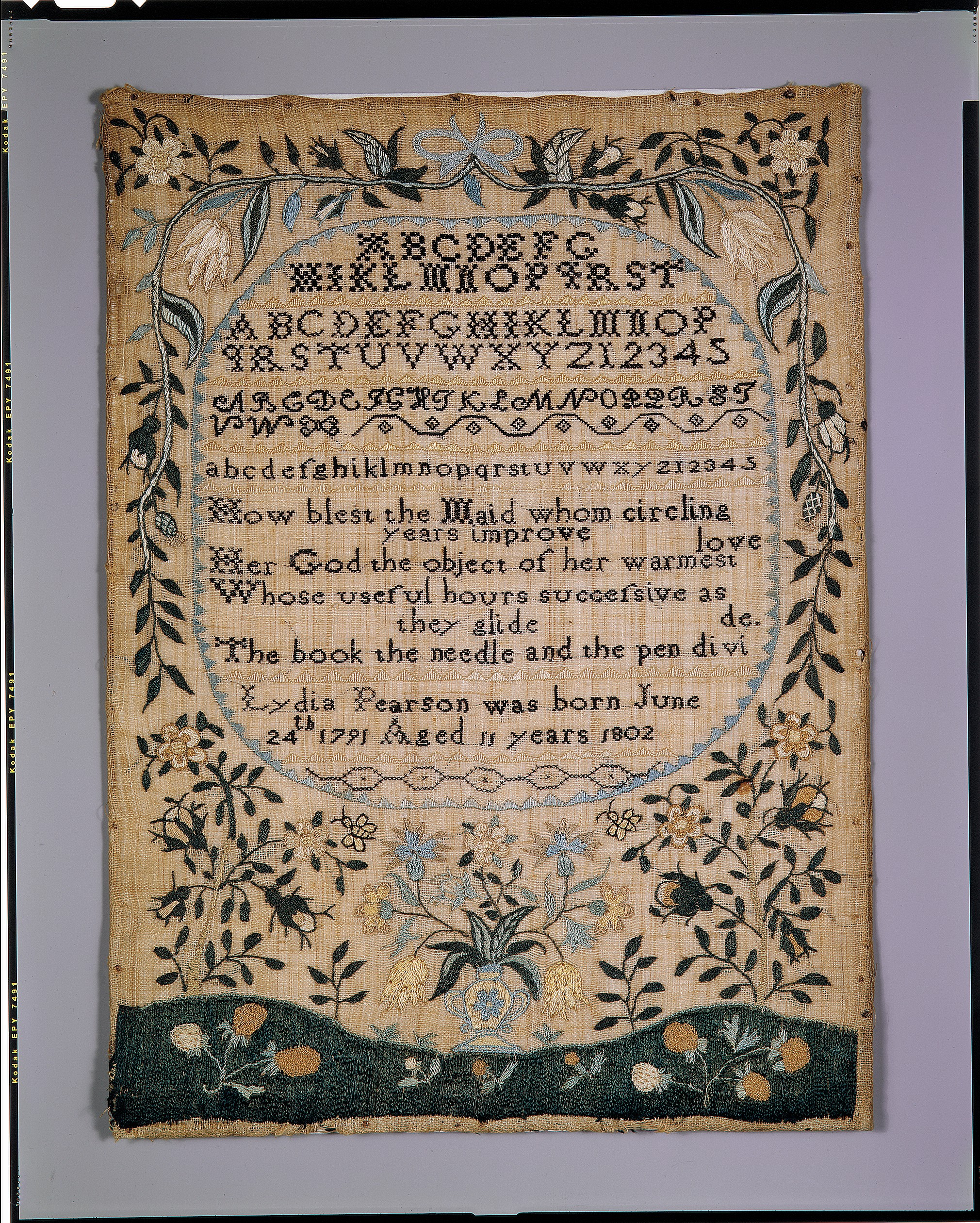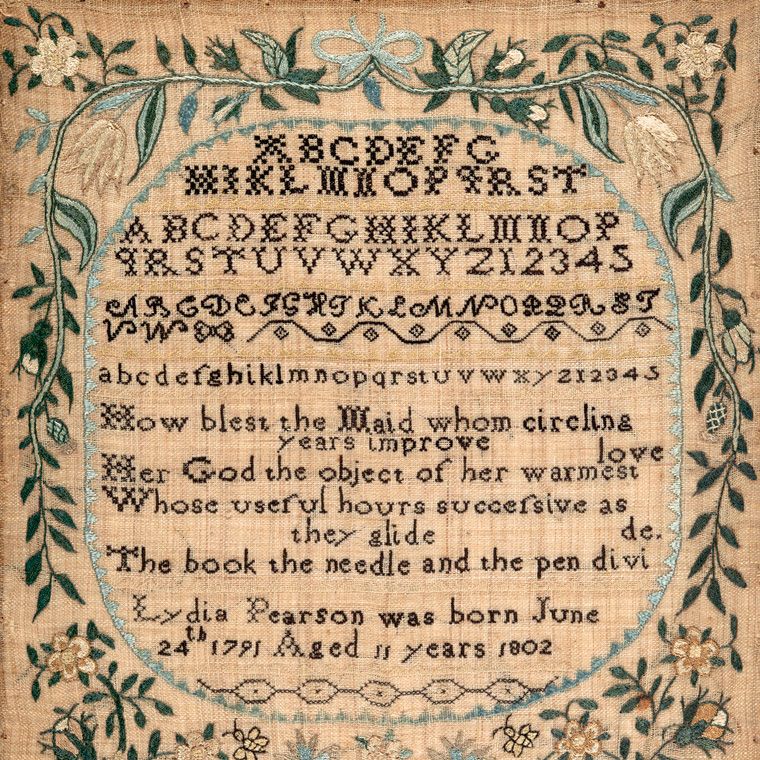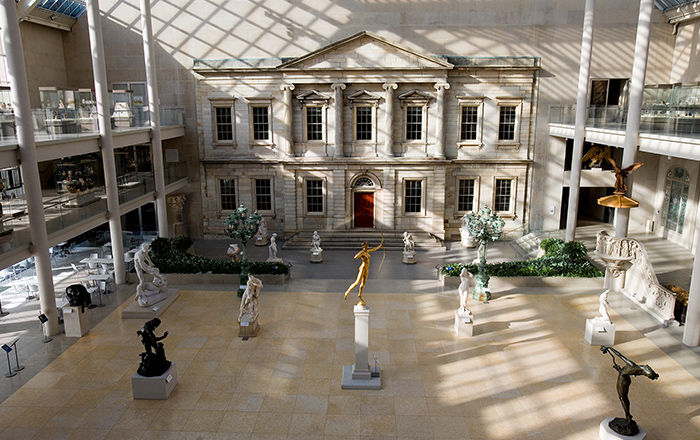Sampler
Lydia Pearson American
Lydia Pearson’s finely worked sampler is embroidered with silk threads that have retained much of their original bright colors. It features four alphabets, a popular verse that advises young women to divide their time usefully with reading, sewing, and writing, and Lydia’s inscription stating her name, birthdate, and her age upon completing the sampler in 1802. All of this is enclosed by a light blue oval sawtooth border that was clearly stitched before the central lettering was added. The lines of the verse have been squeezed into the margins. Along the sides and top of the oval there are flowering leafy vines tied at the top with a blue bowknot. Below is a glossy dark green lawn dotted with strawberries, and at the center of the lawn there is a blue urn filled with an overflowing bouquet of flowers.
Born on June 24, 1791, Lydia grew up witness to Newburyport’s booming maritime economy. The town, situated on the Merrimack River, was well-known for ship building, fishing and whaling, and participation in the triangle trade. She was the daughter of Thomas Pearson (1751-1833) and Elizabeth Hoit Pearson (1760-1848); she was the fifth of the Pearson’s seven children who were all born between 1780 and 1795. In an 1808 Newburyport Herald newspaper advertisement her father announced the opening of his “tin plate working business” on Water Street.
In the early nineteenth century, affluent Newburyport citizens sent their young daughters to primary schools called “dame” or “morning” schools, where they learned the basics of reading, writing and needlework. Many older girls, like Lydia, then attended female academies, where the curriculum, in addition to academic subjects, included fine needlework classes. Additionally, some girls received instruction in fancy needlework from the private instructors who advertised in the local Newburyport newspapers.
When Lydia was twenty-one, she married Captain Francis Hodgkins (1788-1818) on August 21, 1812, in Newburyport. They had three children, Adeline (1814-1895), Emily (1815-1820) and Jacob Francis (1818-1890).
Although the War of 1812 disrupted New England trade, Lydia’s husband captained a ship that sailed to West Indies, likely trading Newburyport-produced barrel staves, fish, lumber, or food stuffs in exchange for run, molasses and sugar, cocoa, coffee, cotton and indigo. On August 10, 1818, eight months after the birth of their son, Capt. Hodgkins died in San Domingo, (in what is today the Dominican Republic), at age thirty. Two years later, their daughter Emily died.
Twenty-nine-year-old Lydia remained in Newburyport after her husband’s death, and raised Adeline and Jacob, her two surviving children. Both children prospered, married and raised their families in Newburyport during the time that the city’s economy moved away from shipping to light manufacturing. Responding to the new era and the growth of the local consumer economy, period records record that Lydia’s grown son, Jacob, became a jeweler and her son-in-law, Nathan Poor (1810-1856), ran a Newburyport furniture wareroom and later was an officer of the local Danvers Bank. According to the 1850 U.S. Census, Lydia lived with Adeline and Nathan and their two sons. The value of the Poor family’s real estate is listed at $13,000 ($523,625 in today’s dollars), reflecting her son-in-law’s success offering fashionable furniture to Newburyport homeowners. After outliving her husband by thirty-three years, Lydia died of cholera in her hometown at age sixty on October 6, 1851.
This image cannot be enlarged, viewed at full screen, or downloaded.
This artwork is meant to be viewed from right to left. Scroll left to view more.




